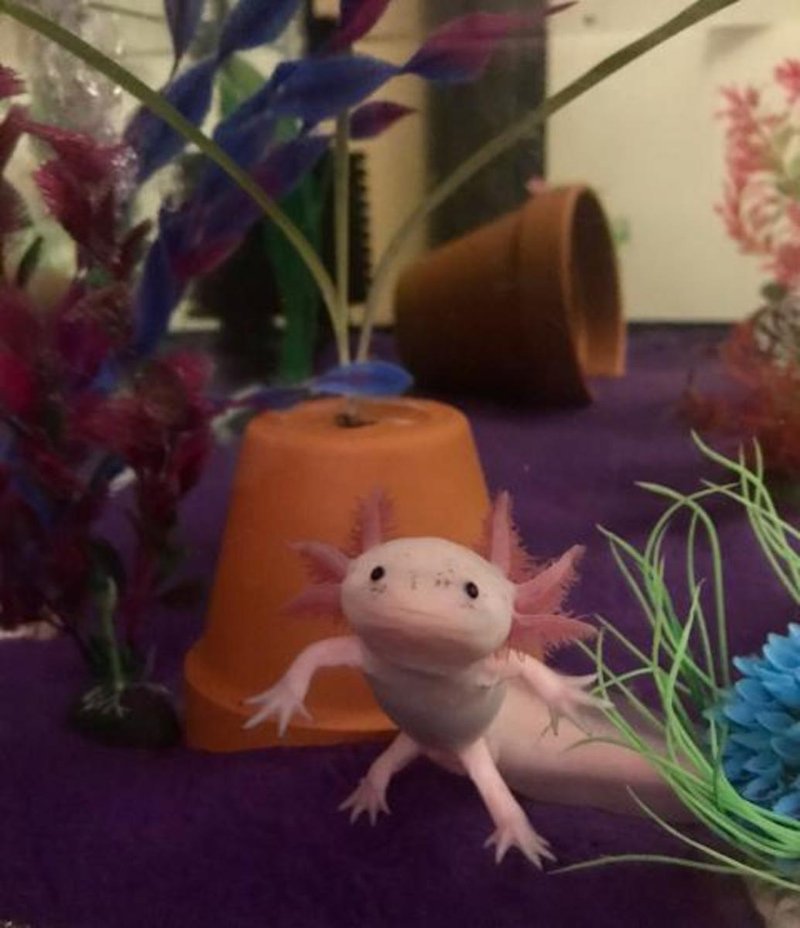
Floating can happen for a variety of reasons, from swim bladder issues to water quality problems. Just like us, axolotls have their off days, and sometimes their bodies need a little extra help. This guide will break down the common reasons for floating, symptoms to watch for, and possible solutions to keep your axolotl happy and healthy. Grab a cup of coffee, and let’s dive into the world of axolotl health!
What Does It Mean When an Axolotl Floats?
When your axolotl floats, it can be a sign of a few different health concerns. In the wild, these creatures are expert swimmers, gliding through the water with grace. So, if you spot your axolotl bobbing around at the surface, it’s often a red flag that something’s wrong. Floating can indicate that your pet is experiencing discomfort or has a health issue that needs addressing.
One of the most common reasons for floating is swim bladder disease. The swim bladder is a gas-filled organ that helps fish maintain buoyancy. If it’s not functioning properly, your axolotl might struggle to stay submerged. But swim bladder issues are just one piece of the puzzle; other factors like sudden changes in water temperature and poor water quality can also contribute.
Here’s the thing: while floating might not always spell disaster, it definitely signals that it’s time to take a closer look at your axolotl’s environment and health.
Swim Bladder Issues: The Main Culprit
Swim bladder disease is the most likely reason for your axolotl’s floating. This condition can arise from various factors, including overfeeding, constipation, or even infections. When the swim bladder isn’t working well, your axolotl struggles to control its buoyancy, leading to floating or even swimming upside down.
So, how can you tell if your axolotl is facing swim bladder issues? Look for these signs:
- Floating at the top of the tank
- Swimming in circles or upside down
- Difficulty staying submerged
If your axolotl shows any of these symptoms, it may be time to assess its diet and check for constipation. Sometimes, a simple fasting period can help reset things.
Water Quality: A Hidden Threat
Water quality plays a massive role in your axolotl’s overall health. Poor water conditions can lead to stress and floating behavior. Axolotls are sensitive little creatures, and changes in their environment can throw them off balance. Ammonia, nitrites, and nitrates should be monitored closely. High levels of these chemicals can cause real problems.
To keep your axolotl happy, you should:
- Test your water regularly
- Change 20-30% of the water weekly
- Use a good quality water conditioner
Checking the temperature is also crucial. Axolotls thrive in cool water, ideally between 60-64°F (16-18°C). If your tank is too warm, your axolotl might float as a reaction to stress.
Feeding Habits: What You Need to Know
Feeding your axolotl correctly is vital. Overfeeding can lead to floating issues, as it may cause constipation. Axolotls don’t have a stop-eating button like we do, so it’s easy to give them too much food. A good rule of thumb is to feed them as much as they can eat in about 10-15 minutes, a couple of times a week.
Also, be mindful of the type of food you’re providing. Some foods can cause bloat if not digested properly. You might consider offering a mix of high-quality pellets and live or frozen foods like bloodworms or brine shrimp to keep things interesting and healthy.
If you notice your axolotl floating right after feeding, try reducing their portion sizes. A little moderation goes a long way!
Infections and Parasites: An Underlying Issue
Another reason your axolotl might be floating is due to infections or parasites. Just like any other pets, axolotls can fall ill. Bacterial or fungal infections can affect their swim bladder and cause unusual behaviors, including floating.
Watch for symptoms like:
- Changes in coloration
- Unusual white patches on the skin
- Loss of appetite
If you suspect an infection, it’s smart to consult with a vet who specializes in aquatic animals. They can help you find the right treatment to get your axolotl back on track.
Stress and Environmental Factors
Stress can also lead to floating in axolotls. Just like us, when axolotls are stressed, they might not behave normally. Environmental factors like loud noises, sudden movement, or even tank mates can contribute to their stress levels.
To create a safe space for your axolotl, ensure their environment is calm and secure:
- Provide hiding spots, like caves or plants
- Avoid placing the tank in high-traffic areas
- Keep the water clean and make gradual changes
Remember, a happy, stress-free axolotl is less likely to float!
When to Consult a Veterinarian
If you’ve noticed your axolotl floating and the common fixes don’t seem to help, it might be time to get professional advice. A vet who specializes in aquatic animals can provide guidance and diagnose any potential illnesses.
Keep an eye on your axolotl during this time. Document any changes or behaviors to share with the vet. This information can be really helpful for pinpointing the problem.
Don’t hesitate to reach out for help when you’re concerned about your pet’s health.
Tips for Prevention and Long-term Care
To prevent floating and maintain your axolotl’s overall health, consistency is key. Here are some tips to keep your axolotl thriving:
- Regularly monitor water parameters
- Feed appropriate amounts and types of food
- Provide a stress-free environment
- Keep an eye on their behavior and health regularly
Taking proactive steps helps ensure that your axolotl stays healthy and happy.
In summary, understanding why your axolotl might be floating is essential for their care. From swim bladder issues to water quality, several factors can impact their behavior. By keeping an eye on their environment and feeding habits, you can help your axolotl swim happily again. After all, there’s nothing quite like seeing your little friend gliding gracefully through the water!

